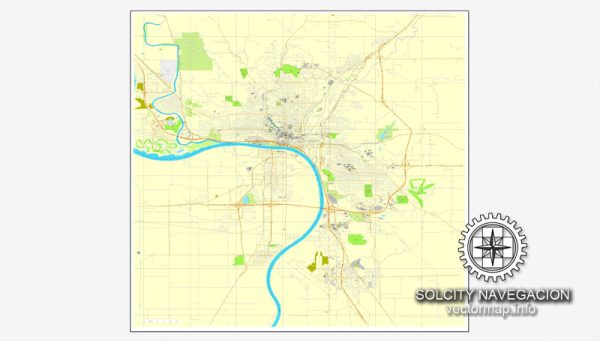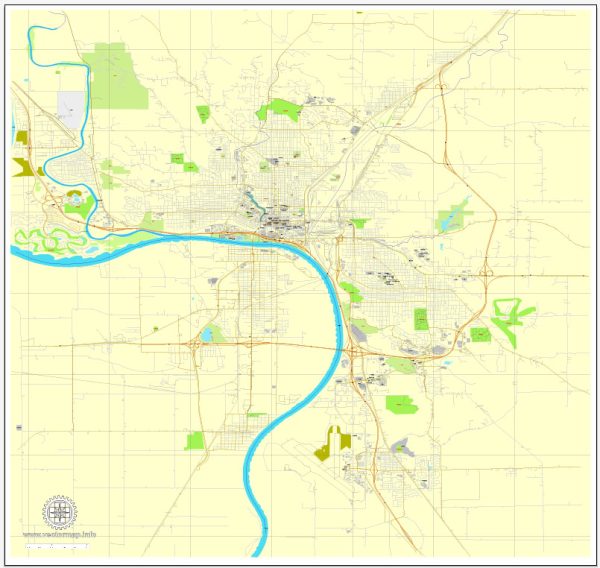Sioux City, Iowa, is a city in the Midwestern United States with a rich architectural history and a blend of architectural styles that reflect its growth and development over the years. Here’s a brief description of some of the architectural characteristics you can find in Sioux City:
- Historic Downtown Architecture: Downtown Sioux City boasts a mix of historic buildings that date back to the late 19th and early 20th centuries. Many of these structures exhibit architectural styles such as Beaux-Arts, Neoclassical, and Victorian, featuring ornate facades, decorative cornices, and intricate detailing.
- Art Deco Influence: The Art Deco style is prevalent in some of the city’s buildings, reflecting the architectural trends of the 1920s and 1930s. Characterized by geometric shapes, bold lines, and decorative motifs, Art Deco can be seen in some of Sioux City’s historic landmarks.
- Prairie School: Sioux City has some examples of Prairie School architecture, which was popular in the early 20th century. Prairie School structures are known for their horizontal lines, flat or hipped roofs with overhanging eaves, and an integration with the surrounding landscape. Frank Lloyd Wright, one of the most renowned Prairie School architects, had a significant influence on this style.
- Mid-Century Modern: As Sioux City expanded in the mid-20th century, it embraced the Mid-Century Modern architectural style. This style is marked by clean lines, flat roofs, large windows, and open spaces. Mid-Century Modern structures can still be found in residential and commercial areas.
- Revival Styles: Sioux City also features buildings with architectural revival styles, such as Colonial Revival, Tudor Revival, and Spanish Revival. These styles reflect a return to the design elements of specific historical periods, resulting in charming and distinctive architectural features.
- Contemporary and Modern Architecture: In recent years, Sioux City has seen the emergence of contemporary and modern architectural designs in new buildings and renovations. These structures often prioritize energy efficiency, sustainability, and open, flexible spaces.
- Public and Cultural Institutions: The city is home to various public and cultural institutions with unique architectural features. The Sioux City Art Center and the Orpheum Theatre, for example, showcase architectural elements that are both aesthetically pleasing and functional.
- Residential Architecture: Sioux City has a diverse range of residential architecture, from historic homes in established neighborhoods to newer developments with modern designs. You can find a mix of styles, including Craftsman, Colonial, and various adaptations of ranch and bungalow homes.
Sioux City’s architecture is a blend of historical preservation and modern innovation, which provides a fascinating journey through the city’s development over the years. Whether you’re interested in exploring its historic downtown district or observing contemporary designs, Sioux City offers a diverse architectural landscape to explore.



 Author: Kirill Shrayber, Ph.D.
Author: Kirill Shrayber, Ph.D.